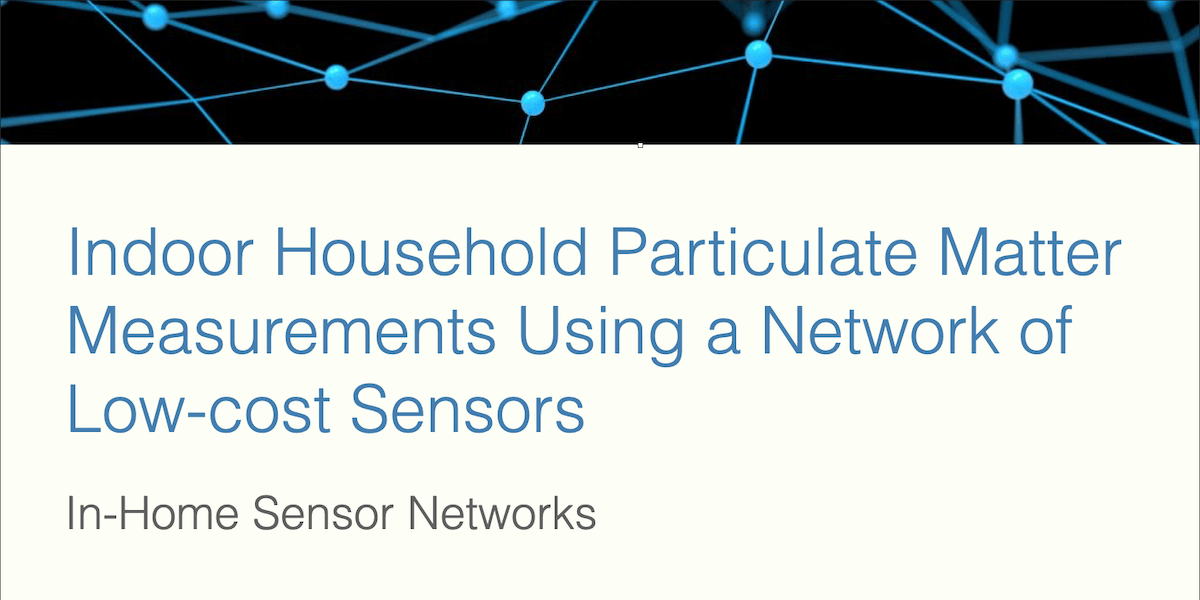
Abstract
The World Health Organization estimates that 4.3 million deaths globally in 2012 were attributable to household air pollution, of which particulate matter (PM) with a diameter of 2.5 µm or less (PM2.5) is a significant contributor. When integrated with a wireless network, low-cost PM measurements potentially provide personalized information on indoor concentrations in real time so that individuals can take action. The objectives of this study were to (1) deploy a network of research-grade instruments and low-cost sensors in a home environment and evaluate the performance, (2) characterize activities and conditions that increase PM concentrations, and (3) identify how these activities affect the PM levels in different rooms of a home. The wireless sensor network included low-cost PM sensors, a gateway, and a database for storing data. Based on the commercially available Dylos DC1100 Pro (Utah Modified Dylos Sensor) and Plantower PMS sensor (AirU), the low-cost sensors were compared to three research-grade instruments—the GRIMM, DustTrak, and MiniVol—in two households in Salt Lake City during summer and winter, with the results suggesting that the low-cost sensors agreed well with the DustTrak. Of the activities, frying food and spraying aerosol products generated the largest increase in PM, both in the room of the activity (the kitchen and bedroom, respectively) and the adjacent rooms. High outdoor PM concentrations during a cold air pool episode also caused indoor levels to rise. In addition, different PM sources triggered different sensor responses. Consequently, obtaining accurate estimates of the mass concentration in an indoor environment, with its wide variety of PM sources, is challenging. However, low-cost PM sensors can be incorporated into an indoor air-quality measurement network to help individuals manage their personal exposure.
Citation
Shruti Hegde,
Kyeong T. Min,
Jimmy Moore,
Philip Lundrigan,
Neal Patwari,
Scott Collingwood,
Alfred Bach,
Kerry E. Kelly
Indoor Household Particulate Matter Measurements Using a Network of Low-cost Sensors
Aerosol Air Quality Research, 20(2): 381--394, doi:10.4209/aaqr.2019.01.0046, 2020.
BibTeX
@article{2020_aaqr_pm,
title = {Indoor Household Particulate Matter Measurements Using a Network of Low-cost Sensors},
author = {Shruti Hegde and Kyeong T. Min and Jimmy Moore and Philip Lundrigan and Neal Patwari and Scott Collingwood and Alfred Bach and Kerry E. Kelly},
journal = {Aerosol Air Quality Research},
publisher = {Taiwan Association for Aerosol Research},
doi = {10.4209/aaqr.2019.01.0046},
volume = {20},
number = {2},
pages = {381--394},
year = {2020}
}
Acknowledgements
We gratefully acknowledge support by NIH Grant Number U54EB021973, Prisms Informatics Platform Federated Integration Architecture and the ECHO Program, National Institutes of Health under Award Number UH3OD023249.